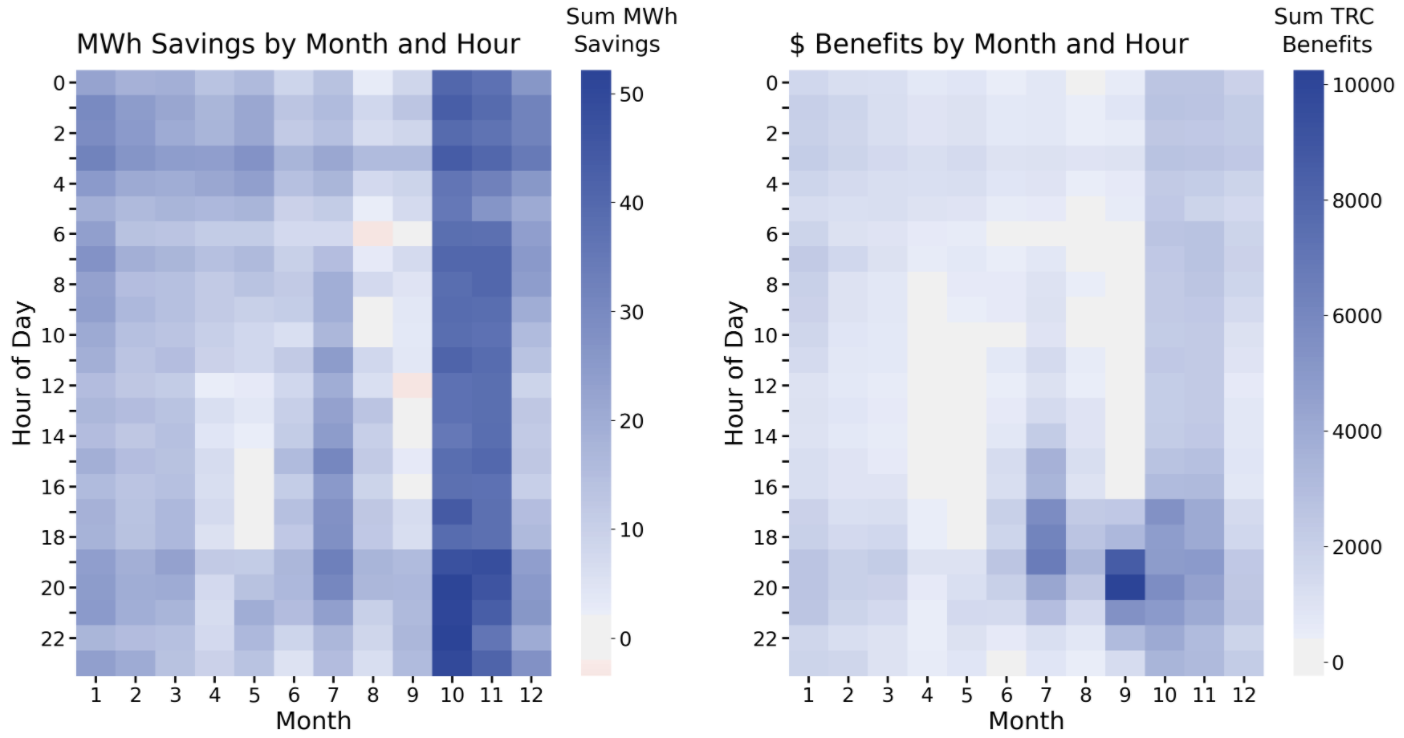 Recurve is excited to announce the release of an open-source package of tools to simplify and bring to life the valuation of demand-side resources. The FLEXvalue™ engine solves some of the biggest problems across our industry today: the lack of transparency, accessibility, and functionality in the calculation of cost-effectiveness and valuation of demand-side resources for market transactions. With the FLEXvalue™ application, users have the power to generate the dollar value and avoided emissions of demand-side resources using either measured load shapes or standard “deemed” values. The ability of FLEXvalue™ to compute grid and carbon benefits from customizable load shapes removes a significant barrier to the more holistic and innovative demand-side solutions needed to address today’s climate challenges. Along with quantifying cost-effectiveness and emissions impacts, FLEXvalue™ produces a series of graphics that showcase a program’s value and provide insights on pathways to optimize. Users also gain access to a clear price signal that all parties can utilize to connect observed program impacts to their grid and carbon value. FLEXValue™ Graphic: Savings and Net Benefit Value Based on CalTRACK Hourly Measurements Recurve has publicly open-sourced the FLEXvalue™ Python codebase, complete with directions and examples, on GitHub. The FLEXvalue™ engine takes simple user inputs and computes the lifecycle grid and carbon value of measures, projects, or portfolios. Outputs are complete and transparent, and the software is easy to run. Users can often be set up in 30 minutes or less. Recurve has tested hundreds of FLEXvalue™ scans and compared the results to the California Public Utilities Commission’s Cost-Effectiveness Tool (CET). Resulting Total Resource Cost (TRC) and Program Administrator Cost (PAC) values consistently match the CET to within 3%. (TRC and PAC tests are the most common cost-effectiveness tests applied for demand-side programs. See FLEXvalue™ documentation for details.) Cost-effectiveness and benefit-cost analysis (BCA) has been foundational to demand-side programs since their inception. Publicly available tools have been the primary means for conducting cost-effectiveness calculations, but they have generally been the domain of consultants and regulatory compliance offices. Instead of this model, an open-source tool that is carefully governed can help everyone who depends on cost-effectiveness and needs transparency in how resources are valued. Most jurisdictions need to frequently modify their existing cost-effectiveness tools to keep up with technological advances, new assumptions, or updated policies. Keeping pace with these changes creates IT hurdles and structural barriers to better programs. Adopting a mutually agreed upon open-source codebase, rather than a specific proprietary or even public software tool, helps remedy these issues. FLEXvalue™ will adopt an open governance model to allow those most familiar with the tool to work together to ensure that the code accurately and transparently reflects current policies. The open-source codebase can be cited-by-reference for use in any relevant proceeding, maintaining complete regulatory control to review and verify compliance with policy direction and manage vintage control for use in any of their processes. The first iteration of the FLEXvalue™ engine is now available for use in California. Market actors can estimate the value and cost-effectiveness of their combined demand flexibility projects, energy efficiency, or any other demand-side resource that would reference the CPUC’s avoided costs. While this implementation is specific to California, the FLEXvalue™ calculator is extendable to virtually any demand flexibility market to operationalize cost-effectiveness policies and house a market’s price signal.
FLEXvalue™ also aligns with core benefit-cost principles in the recently released DER National Standard Practice Manual, particularly #1 (treat DERs a utility system resource using consistent methods and assumptions) and #7 (ensure transparency to foster trust in benefit-cost methods). Coupled with the manual's other recommendations, FLEXvalue™ can improve market accessibility while supporting any cost-test that may be adopted in your jurisdiction. It represents another powerful tool for democratizing and dramatically expanding the use of behind-the-meter resources to address grid and climate challenges. We need modern tools built with modern code to modernize the grid — and we need to be working from the same page. When combined with open, meter-based methods and software such as CalTRACK and the OpenEEmeter, the FLEXvalue™ engine enables regulators and utilities to readily screen projects in advance, track if their programs are cost-effective during deployment, generate the most accurate claim for the resources' actual impact to the grid, and optimize going forward. Learn more about the California application of the FLEXvalue™ engine here. The FLEXvalue™ design team is also hosting two introductory webinar trainings to give users step by step support in getting the FLEXvalue™ engine up and running. Join us and get the answers to your most urgent FLEXvalue™ questions. Apr 15, 2021 10:00 AM Pacific Time (US and Canada) Register When: Apr 21, 2021 02:30 PM Pacific Time (US and Canada) Register FLEXvalue™ gives us the start on demand-side resource valuation. Your contributions can help all of us along.
0 Comments
Leave a Reply. |
ArchivesCategories |





 RSS Feed
RSS Feed
